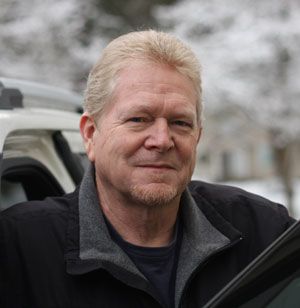Intersection quandary
Certain traffic quandaries are repetitive. One of those oft-perplexing situations concerns right of way at “T” intersections. It’s common for drivers travelling the top of the “T” to believe that they have right of way over those driving the “leg” of the “T.”
As an example, reader S.C. asked, “Here’s the argument: one of us maintains the uncontrolled intersection right of way rule (first arriving vehicle has it, if simultaneous arrival vehicle on right has it) applies everywhere streets meet. The other individual claims this only applies to four-way intersections. This person believes that, despite the absence of stop or yield signs, at three-way, or ‘T’, intersections the vehicle on the ‘through’ street always has precedence over one arriving on the street which ends at the meeting point. Can you settle this debate?”
S.C.’s query is typical, especially in our region with so many uncontrolled (no stop sign or traffic signal) intersections.
The logic presented by some that the “through” street drivers deserve right of way may seem to have worthiness, but has no basis in established law. The applicable RCW reads: RCW 46.61.180 Vehicle approaching intersection. When two vehicles approach or enter an intersection from different highways at approximately the same time, the driver of the vehicle on the left shall yield the right-of-way to the vehicle on the right.
It is quite clear and unambiguous that the driver of the vehicle to the right should be afforded the right of way, and there is no provision contained therein for an exception at a “T” intersection, or where one of the intersecting roadways is bigger, busier or otherwise more “important” than the other. If traffic engineers or applicable transportation departments decide that one of the intersecting roadways (either “T” or through) is somehow less deserving of the right of way, a stop sign or flashing red signal would be installed there.
That is the letter of the law, but the real-world norm may differ. It is indeed common for drivers to deem that one intersecting road may be “greater” or “lesser” than another, and either take or defer the right of way according to that thinking.
And by the way, the catch-all “highway” terminology is regularly used in Washington law, and is intended to include other descriptive terms such as “road,” “roadway,” “street,” “arterial” and other places that motor vehicles typically travel.
Additionally, since drivers regularly use their own judgment at intersections, one must be ready for any eventuality there. Regular readers know that it irks me when drivers who have the right of way at an intersection defy law by stopping and “waving” for others to proceed before them.
Not only is that behavior in defiance of established law, but causes unnecessary confusion and potential danger. The various hand signals used are often hard to decipher, or even see due to window tint.
At an intersection near my home, I have regularly been already stopped, relinquishing right of way to a vehicle approaching on my right, when that vehicle stops and signals via hand motions for me to proceed. That behavior is not conducive to safe, efficient traffic flow. Also, accidents occur drivers follow another driver’s motion to “go,” when doing so conflicts with other traffic that neither affected driver noticed.
Driving demands defensive attitudes and adjustment to traffic control gray areas as musts for efficient flow and minimizing conflict.
Readers may contact Bill Love via e-mail at precisiondriving@spokesman.com.w
